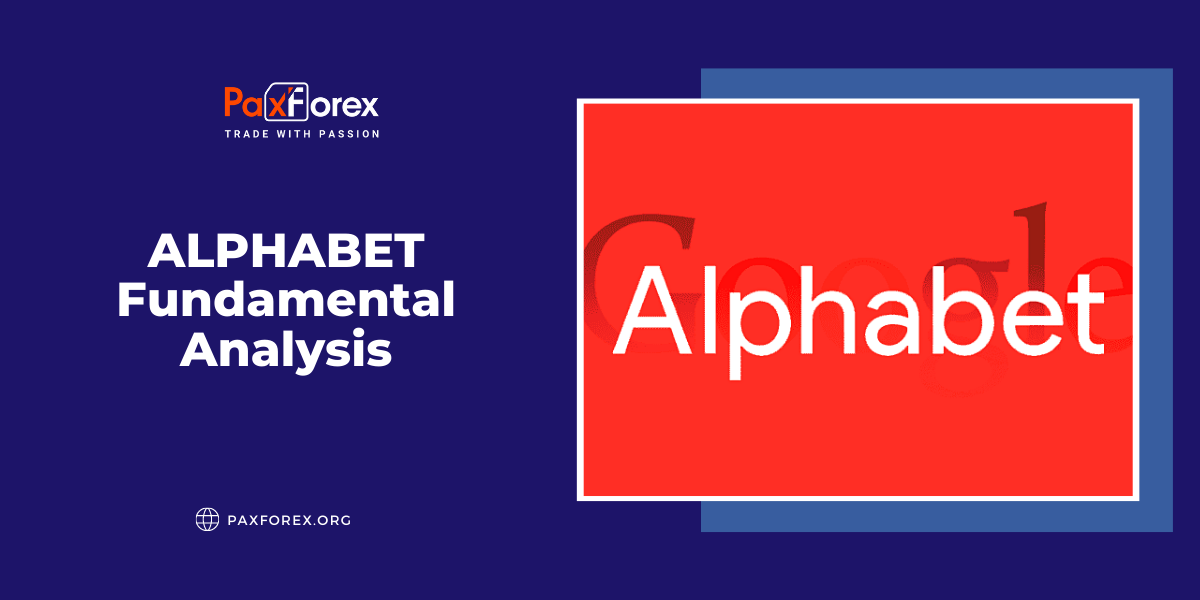
Source: PaxForex Premium Analytics Portal, Fundamental Insight
Internet search giant Alphabet has built one of the world's largest advertising businesses. If you type a question into Google's search engine, it's not surprising to see a handful of paid ads sitting on top of the actual search results. Similarly, Alphabet-owned video-sharing site YouTube often requires its users to preview ads before watching a video.
While advertising is still the daily bread for Alphabet, there is no denying that growth from advertising is falling. One reason is the broader macroeconomic effect of inflation. Because of the rising cost of goods and services, advertisers are more cautious and selective in their budget allocation. In addition, YouTube has been struggling for quite some time with the widely popular short video-viewing app TikTok. While YouTube still collects billions of views, some advertisers may question the direction the video site is taking now that TikTok is gaining market share.
While these are valid concerns, there is one business within the Alphabet ecosystem that seems to be overlooked and undervalued. While the company's overall growth seems to have stalled, there is one shining treasure: the Google Cloud Platform. Let's dive into Alphabet's Q3 earnings information and outlook for the company, and focus on Google Cloud and the various investments Alphabet has made to compete in this market.
Cloud computing is a general term that encompasses many different concepts. For starters, the genesis of cloud computing came from an outdated way of storing data, namely on physical servers. As companies of all sizes collect, analyze and synthesize more and more data, they increasingly rely on storage.
Another end market affected by cloud computing is cybersecurity. As data has become more important to corporate executives' decision-making, hackers see it as a coveted asset. Many large companies, including Wells Fargo, Equifax, and others, have fallen victim to known data breaches. Moreover, as more and more people work from home, the need to secure and protect company-issued devices, such as phones and laptops, is a top priority. For these reasons, cybersecurity has seen increased demand in the past few years.
Large tech companies have taken notice of these macro trends and have invested large sums in the cloud and cybersecurity.
Amazon Web Services nearly triples the revenue of Google Cloud Platform. However, if you look under the hood, you can see that Google Cloud's quarterly revenue is growing much faster than Amazon Web Services. And while the rate of quarterly revenue growth is declining for both companies, Google Cloud still accounts for nearly 40% of annual growth, compared to 30% for Amazon Web Services.
Another point to focus on is operating profit. Amazon Web Services has been consistently profitable, while Google Cloud continues to lose money.
In some ways, however, Google Cloud operates almost like a startup, while Amazon Web Services mimics more of a mature business. In part, Google Cloud is losing money because Alphabet has made several major acquisitions in the cloud space over the past year. As a result, Alphabet has stepped up efforts to hire developers and engineers for cloud computing, thereby incurring costs soon.
At first glance, this investment appears to be paying off with increased demand. Although Alphabet is pouring billions into developing its cloud platform, the company continues to show steady growth in turnover and is moving toward greater operational efficiency.
As of Q3 2022, Google Cloud has annual revenue of about $28 billion. Amazon Web Services is approaching $100 billion in annual revenue, but Google Cloud is growing much faster. As of this writing, Alphabet has a market capitalization of about $1.1 trillion. If Google Cloud is at least 10 percent of that value, that means the cloud could be Alphabet's next $100 billion revenue stream. However, given the growth rate of cloud technology, especially compared to legacy businesses such as advertising, Google Cloud is likely worth much more than Alphabet's 10%.
For this reason, investors now have an incredible opportunity to invest in a growing business inside an already stable blue-chip company. Now could be a great time to reduce the value or create a position for long-term investors.
As long as the price is above 90.00, follow the recommendations below:
- Time frame: D1
- Recommendation: long position
- Entry point: 95.40
- Take Profit 1: 103.00
- Take Profit 2: 108.00
Alternative scenario:
If the level of 90.00 is broken-down, follow the recommendations below:
- Time frame: D1
- Recommendation: short position
- Entry point: 90.00
- Take Profit 1: 85.00
- Take Profit 2: 80.00













